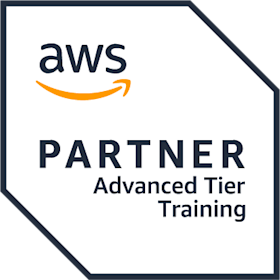Course subjects
Module 0: Introduction
Introduction to the application you will build
Access to course resources (Student Guide, Lab Guide, and Online Course Supplement)
Module 1: Thinking Serverless
Module 2: API-Driven Development and Synchronous Event Sources
Characteristics of standard request/response API-based web applications
How Amazon API Gateway fits into serverless applications
Try-it-out exercise: Set up an HTTP API endpoint integrated with a Lambda function
High-level comparison of API types (REST/HTTP, WebSocket, GraphQL)
Module 3: Introduction to Authentication, Authorisation, and Access Control
Authentication vs. Authorisation
Options for authenticating to APIs using API Gateway
Amazon Cognito in serverless applications
Amazon Cognito user pools vs. federated identities
Module 4: Serverless Deployment Frameworks
Overview of imperative vs. declarative programming for infrastructure as code
Comparison of CloudFormation, AWS CDK, Amplify, and AWS SAM frameworks
Features of AWS SAM and the AWS SAM CLI for local emulation and testing
Module 5: Using Amazon EventBridge and Amazon SNS to Decouple Components
Development considerations when using asynchronous event sources
Features and use cases of Amazon EventBridge
Try-it-out exercise: Build a custom EventBridge bus and rule
Comparison of use cases for Amazon Simple Notification Service (Amazon SNS) vs.
EventBridge
Try-it-out exercise: Configure an Amazon SNS topic with filtering
Module 6: Event-Driven Development Using Queues and Streams
Development considerations when using polling event sources to trigger Lambda
functions
Distinctions between queues and streams as event sources for Lambda
Selecting appropriate configurations when using Amazon Simple Queue Service (Amazon
SQS) or Amazon Kinesis Data Streams as an event source for Lambda
Try-it-out exercise: Configure an Amazon SQS queue with a dead-letter queue as a
Lambda event source
Hands-On Labs
Module 7: Writing Good Lambda Functions
How the Lambda lifecycle influences your function code
Best practices for your Lambda functions
Configuring a function
Function code, versions and aliases
Try-it-out exercise: Configure and test a Lambda function
Lambda error handling
Handling partial failures with queues and streams
Module 8: Step Functions for Orchestration
AWS Step Functions in serverless architectures
Try-it-out exercise: Step Functions states
The callback pattern
Standard vs. Express Workflows
Step Functions direct integrations
Try-it-out exercise: Troubleshooting a Standard Step Functions workflow
Module 9: Observability and Monitoring
The three pillars of observability
Amazon CloudWatch Logs and Logs Insights
Writing effective log files
Try-it-out exercise: Interpreting logs
Using AWS X-Ray for observability
Try-it-out exercise: Enable X-Ray and interpret X-Ray traces
CloudWatch metrics and embedded metrics format
Try-it-out exercise: Metrics and alarms
Try-it-out exercise: ServiceLens
Hands-On Labs
Module 10: Serverless Application Security
Security best practices for serverless applications
Applying security at all layers
API Gateway and application security
Lambda and application security
Protecting data in your serverless data stores
Auditing and traceability
Module 11: Handling Scale in Serverless Applications
Scaling considerations for serverless applications
Using API Gateway to manage scale
Lambda concurrency scaling
How different event sources scale with Lambda
Module 12: Automating the Deployment Pipeline
The importance of CI/CD in serverless applications
Tools in a serverless pipeline
AWS SAM features for serverless deployments
Best practices for automation
Course wrap-up
Hands-On Labs
Please note: This is an emerging technology course. Course outline is subject to change as needed.

